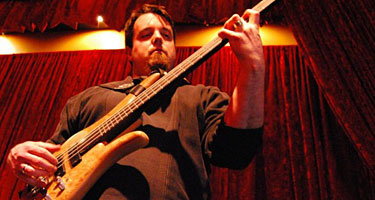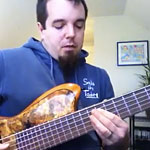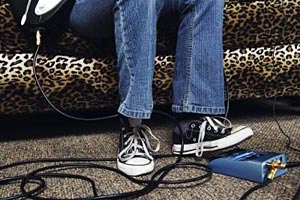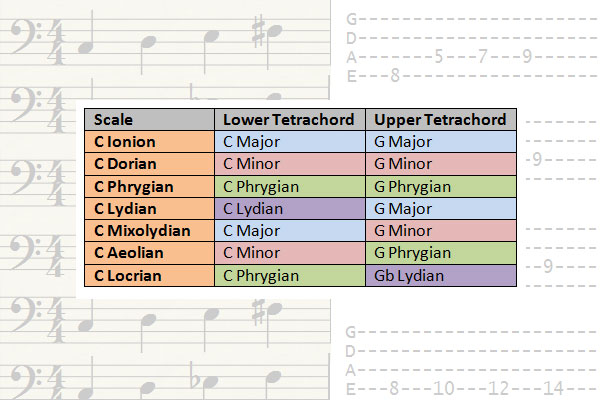Bass Lesson Archives - Page 14
Ask Damian Erskine: Reductive Practice
Q: I have a question regarding funk slap bass techniques. Are there any certain key techniques to doing this? I listen to a lot of bass-heavy funk lines in music and want to play them, but the speed at which they are able to do that stuff is incredible. I have often wondered if I am too heavy with my...
Rhythm Series: Improving Rhythmic Accuracy by Subdividing
Rhythmic Accuracy Last time we talked about one of the major physical components rhythm: feeling the beat internally. However, for the performer there are two components to rhythm, physical and mental. Accurate execution of musical rhythm requires the cultivation of both aspects. One important mental element needed to precisely perform rhythms is active subdivision. Subdividing Most of us understand that...
A Look at Oscar Pettiford’s “Tricotism”
I’d like to give a big thanks to everyone for their encouraging words on my first column; John Goldsby shared that he and John Patitucci have recorded “Bohemia After Dark”, and I’d encourage folks to take a listen to their respective versions of the tune. Now, back to the show. In our second installment on Oscar Pettiford, we are going...
Decoding Graphic Equalizers: Get Past “Scooping” Your Tone
I get a lot of calls and e-mails from fellow bassists and guitarists alike pertaining to all sorts of equipment problems. One of the most recessing issues I deal with is walking someone through the steps of setting-up their graphic equalizers (you know, the thing with all the sliding tabs that you arrange to look like a smiley-face). Most guitarists...
Approaches to Soloing
Q: I have a question. How do you go about soloing for various styles? Quite often I get the nod to do a solo for 4/8/16 bars. I’ve tried approaching by working out what key I’m in and then by trying different modes… but it just seems that my phrasing is limited and that it never seems to have a...
Rhythm Series: Keeping Time
Keeping a steady pulse is a fundamental skill for any musician, and it is especially important to any one who is part of the rhythm section. Even in styles of music that encourage flexible rhythmic expression (i.e. rubato, etc.), the ability to maintain an accurate pulse is essential for a musician. No matter what style of music we play, or...
Introduction to Bebop Scale Forms
In this lesson we’ll explore the basic forms of Bebop scales so you can start getting the patterns down and experiment with them in your music. There are times when you solo that you may want to do a scale run over a chord. Have you ever noticed that a straight descending scale run as eighth notes over a chord...
Walking Bass (and Getting Away from Tab)
Q: I’d like to learn to create walking bass lines. I don’t read music so tabs would be preferred. A: Learning to walk is immensely helpful in so many ways. It helps you see the inter-connectivity between chords, helps develop a good time-feel and helps you explore how the arc of a line can affect the feel of the music....
Lesson: Building an Improvised Composition for Solo Bass with a Looping Device
One exciting way of use a looping device with your bass is to enhance a composition. A recorded phrase can become a backbone over which to improvise. For example, a phrase can take the form of a tapped rhythm (e.g. using muted strings), a short rhythmic phrase lasting only one or two bars or a longer phrase dependent on your...
Lesson: Minor Tetrachord Patterns
In the last tetrachord lesson we went over the concept of tetrachords and how they change the way we think about scale patterns. In that lesson the focus was the major modes and a question was posted asking about the melodic minor and harmonic minor modes. Therefore this week’s article will go over tetrachords in the melodic minor and how...
Live looping: Thinking Outside the Box
I was in a music retail outlet recently where I purchased a Boss RC-20XL Loop Station. A great piece of kit, a glowing review of which I will post separately. What occurred to me, as the eager shop assistant demo’d the device, was that live looping may have become a little typecast in the minds of many musicians; i.e. a...
Lesson: Scale Patterns from Tetrachord Combinations
We normally think of scales in terms of eight-note patterns and treat them as a unit. There are the standard modal forms for both major and minor, the bop variations, blues variations, but all of these still cling to the paradigm of an octave based scale unit (even if the total number of notes in the scale changes). As bassists...







